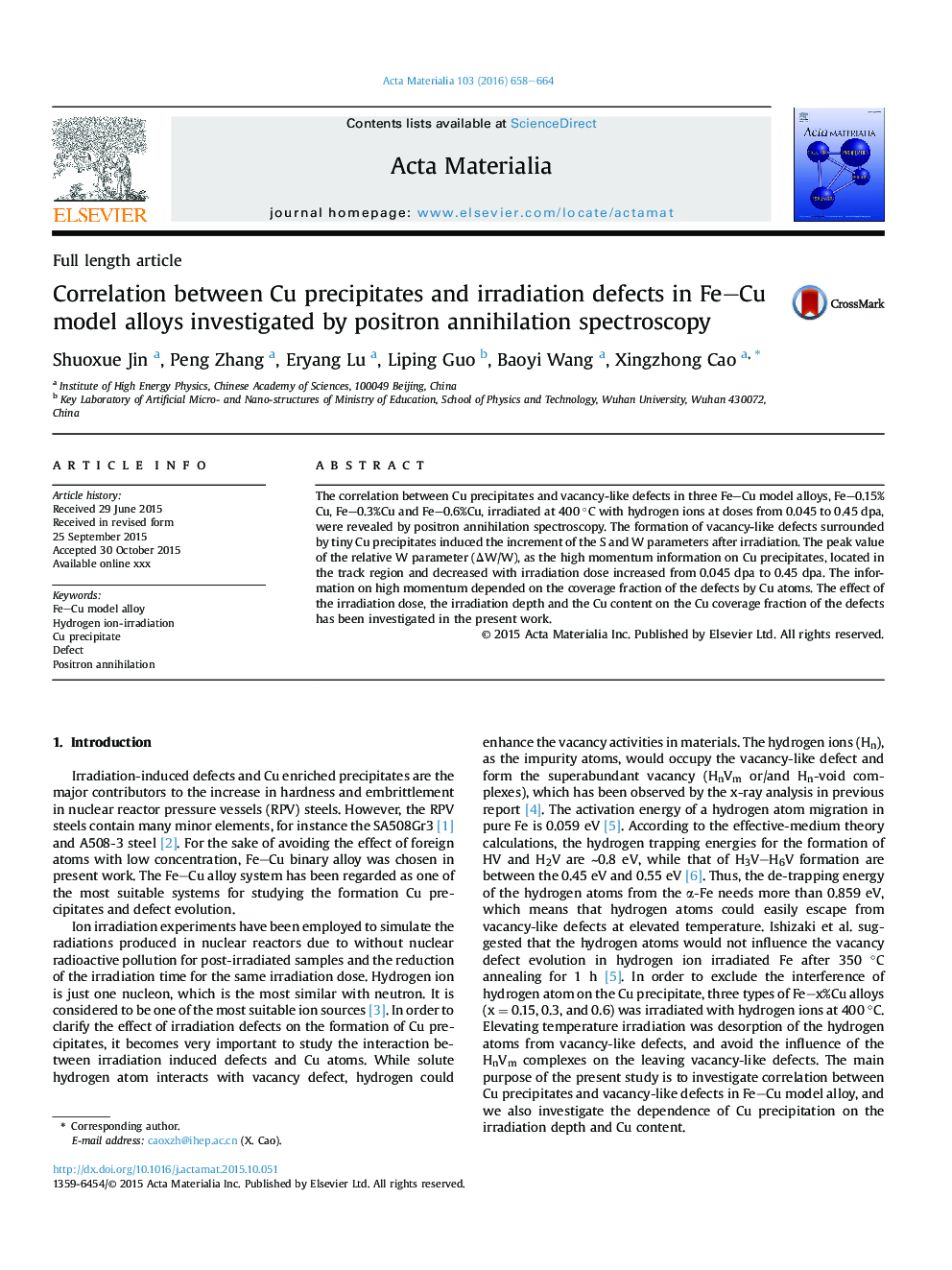| Article ID | Journal | Published Year | Pages | File Type |
|---|---|---|---|---|
| 7879506 | Acta Materialia | 2016 | 7 Pages |
Abstract
Figure a shows the ÎW/W parameters of the Fe-0.3%Cu alloy irradiated with different dose. Compared to the pure Fe and not irradiated alloy, the increment of the ÎW/W parameters meant the vacancy-like defect surrounded by Cu atoms formed due to the aggregation of Cu-vacancy complexes. With the irradiation dose increased from 0.045 dpa to 0.45 dpa, the ÎW/W parameter decreased, which was due to the size increment of vacancy-like defects at 0.45 dpa. It could decrease the coverage fraction of the defects by Cu atoms and annihilations with the Cu core electrons. The information on high momentum depended on the coverage fraction of the defects by Cu atoms. The ÎW/W parameter increased with the increasing of Cu content, as shown in Figure b. The Cu content increasing in Fe-Cu alloys enhanced the coverage of the defects by copper atoms and increased the ÎW/W parameters.71
Related Topics
Physical Sciences and Engineering
Materials Science
Ceramics and Composites
Authors
Shuoxue Jin, Peng Zhang, Eryang Lu, Liping Guo, Baoyi Wang, Xingzhong Cao,
